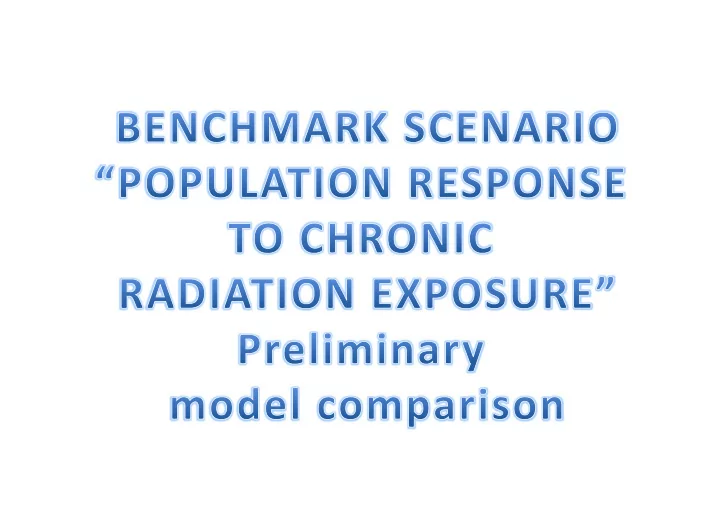

Benchmark scenario ”Population response to chronic irradiation”. Populations of the following species are subjected to chronic low ‐ LET radiation exposure with dose rates 10, 20, 30, 50 mGy/day: • Generic mice population; • Generic hare/rabbit population; • Generic wolf/wild dog population; • Generic deer population.
Before irradiation, each population was in stable state, consisting of 1000 animals, which corresponds to the carrying capacity of the ecosystem. The duration of exposure is 5 years.
Calculate the following benchmark endpoints: • Size of each population, in % of the initial size for each dose rate. (Control population size=1000). • Population size is predicted for the following time checkpoints: the end of 1 st , 2 nd , 3 rd , 4 th and 5 th years of exposure; • After the exposure was finished, calculate the time for recovery of populations to their initial size.
10 mGy/day, 5 years 100 Population size, % of the control 80 Sazykina 60 Jordi Vives Luigi Monte 40 A.Kryshev 20 0 Mice Rabbit Deer Wolf/dog
120 20 mGy/day, 5 years 100 Population size, % of the control 80 Sazykina Jordi Vives 60 Luigi Monte A.Kryshev 40 20 0 Mice Rabbit Deer Wolf/dog
‐ Population survival of short ‐ lived species is better than that of long ‐ lived animals; ‐ Dose rates about 10 mGy/day for 5 years produced significant reduction of wolf/dog and deer populations; populations of mice and rabbits survived at 80 ‐ 100% of the control. ‐ Dose rate 20 mGy/day for 5 years produced considerable reduction of all populations, excepting short ‐ lived mice, which survived at levels above 70% of the control.
Recommend
More recommend